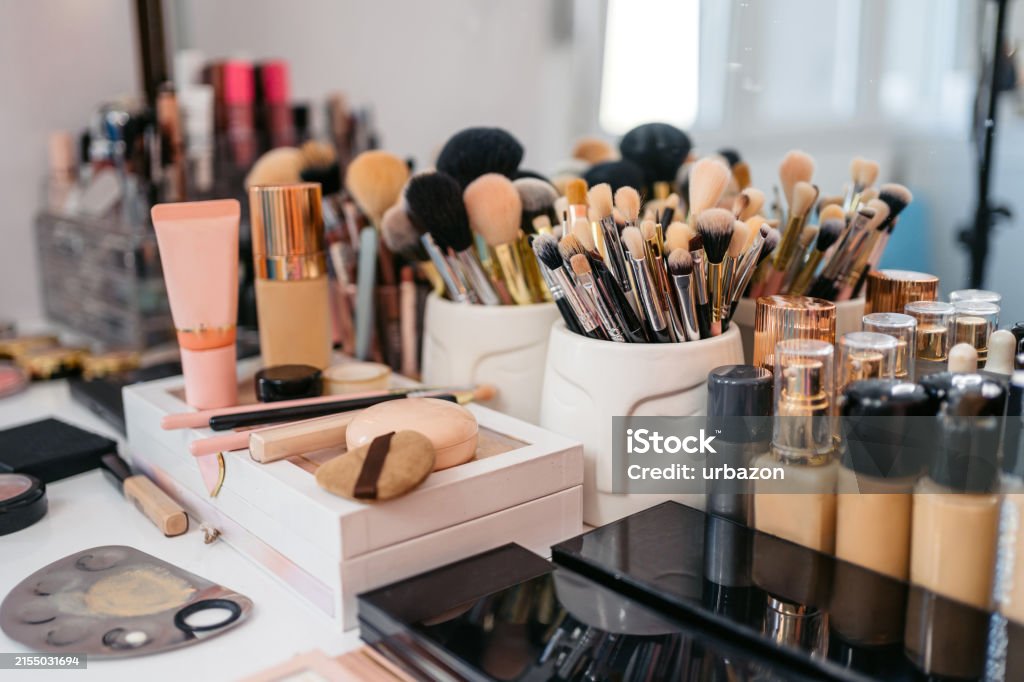Makeup can be traced back to ancient civilizations, where it was used for both aesthetic and practical reasons. In Ancient Egypt, both men and women wore it as a symbol of social status and to protect themselves from the harsh sun. Egyptians used malachite and kohl to darken their eyes, creating dramatic eye makeup that remains iconic to this day. Similarly, the use of henna for body art and lip color dates back to ancient times.

In Ancient Greece and Rome, makeup was often used to achieve a pale complexion, which was considered a sign of beauty. Roman women used a variety of powders and paints, including lead-based white face powders (which unfortunately caused health issues). By the Renaissance, pale skin remained a symbol of wealth, as it indicated that one did not have to labor in the sun.
The 18th century brought about more sophisticated makeup techniques, with powdered wigs and the use of rouge to add a flush of color to the cheeks. However, it wasn’t until the 19th and early 20th centuries that makeup became more standardized and commercially available, particularly with the invention of lipstick, mascara, and foundation.
It is an art form, a personal expression, and a significant part of many people’s daily routines. It involves the application of cosmetics to the face and other parts of the body to enhance one’s appearance or create an artistic look. It is commonly used to highlight natural features, correct skin imperfections, or alter the face’s structure entirely for various purposes such as fashion, theatre, or special occasions. In addition to being used for aesthetic purposes, makeup has also evolved into a form of self-care, empowerment, and personal identity.
Origins and History
The use of this can be traced back to ancient civilizations. In Ancient Egypt, both men and women used makeup to protect themselves from the sun and to create a sense of beauty and power. Egyptians are known for using eye makeup, such as kohl to darken the eyes, and green malachite or crushed gemstones for eyeshadow. Similarly, the Greeks and Romans applied cosmetics to enhance their skin and features, while in China, women have been using rice powder to create pale, porcelain-like skin for centuries.
In the 18th and 19th centuries, makeup became more popular in Western cultures, albeit in more subtle forms. Pale skin was a symbol of high status, while rosy cheeks and lips were considered attractive. By the early 20th century, with the advent of cinema and the rise of Hollywood stars, makeup began to become more commercialized and accessible to the masses. Brands such as Max Factor and Revlon led the way in creating products aimed at enhancing beauty.
Types of Makeup
The products are diverse, each serving a specific purpose in creating different looks. Some of the most common products include:
- Foundation: Used to even out the complexion, cover blemishes, and provide a smooth base. Foundations come in liquid, powder, cream, and stick forms.
- Concealer: Applied to cover darker spots, blemishes, or dark circles under the eyes. It is often thicker than foundation and provides more concentrated coverage.
- Powder: Helps set foundation, control shine, and create a matte finish.
- Blush: Adds color to the cheeks, giving a youthful and healthy glow.
- Eyeshadow: Used to add color and dimension to the eyelids. Available in a wide range of colors and finishes, such as matte, shimmer, and metallic.
- Mascara: Applied to the eyelashes to make them appear longer and fuller.
- Eyeliner: Used to define the eyes, creating a bold or subtle look.
- Lipstick and Lip Gloss: Add color and texture to the lips, with a variety of finishes ranging from matte to glossy.
Makeup in Modern Times
In contemporary society, makeup has become more than just a tool for enhancing appearance. It is often used to express individuality and creativity. The rise of social media platforms like Instagram and YouTube has led to the popularity of makeup tutorials and influencers, who showcase how to apply products in creative ways. The beauty industry is booming, with countless brands offering a wide variety of products catering to different skin tones, textures, and preferences.
Makeup has also become a powerful tool in gender expression. Many people use makeup to express their gender identity, creating looks that reflect how they want to be perceived. This shift has led to the emergence of unisex and gender-neutral makeup brands that emphasize inclusivity and diversity.
Makeup and Society
While this is empowering for many, it has also been the subject of criticism. Some argue that society places undue pressure on individuals, particularly women, to meet beauty standards that may not be realistic. However, others see makeup as a form of self-expression, confidence, and empowerment, allowing individuals to define beauty on their own terms.
In conclusion, it is a dynamic and multifaceted practice with deep historical roots. Today, it is used not only to enhance natural beauty but also to make personal and creative statements. The evolution of makeup continues to influence and reflect broader cultural shifts in beauty standards, self-expression, and identity.